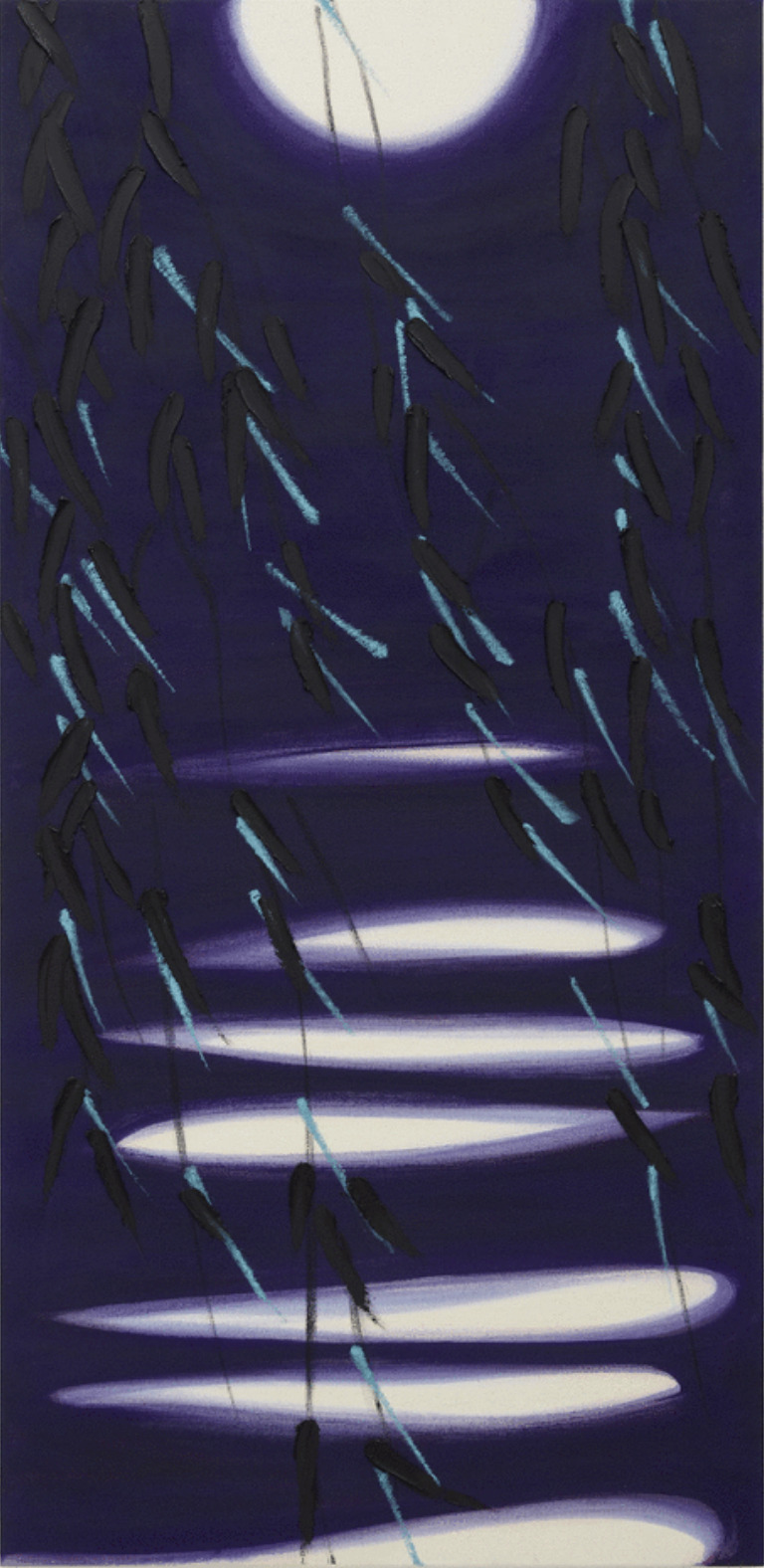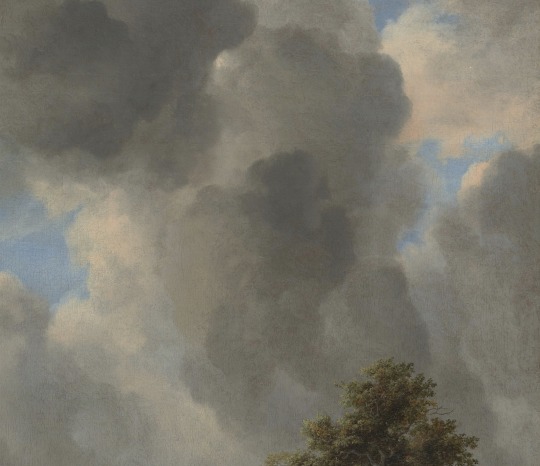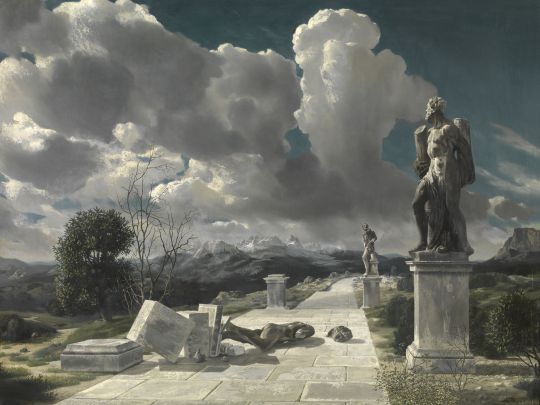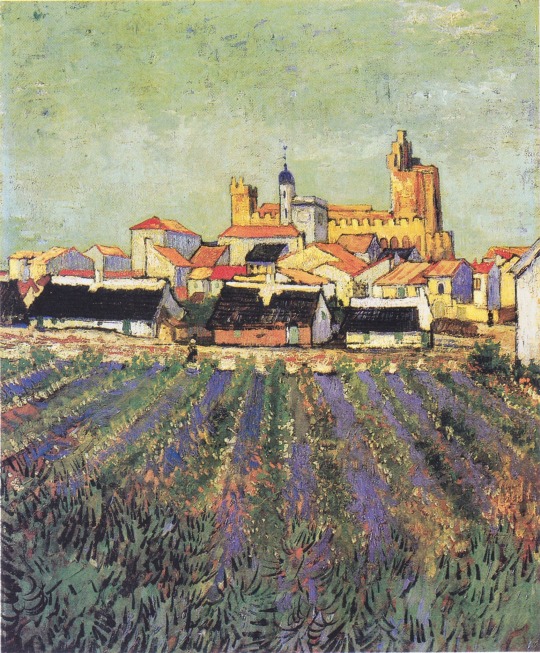#dutch landscape painters
Explore tagged Tumblr posts
Text

Vincent van Gogh, Wheat Fields After the Rain (The Plain of Auvers), 1890
#vincent van gogh#van gogh#dutch artist#Dutch art#dutch painting#dutch painter#landscapes#landscape painting#landscape aesthetic#aesthetic#beauty#nature#modern art#art history#aesthetictumblr#tumblraesthetic#tumblrpic#tumblrpictures#tumblr art#tumblrstyle#artists on tumblr#french landscape
2K notes
·
View notes
Text

Houses at Auvers
Artist: Vincent van Gogh (Dutch, 1853–1890)
Date: 1890
Medium: Oil on canvas
Collection: Museum of Fine Arts, Boston
Description
In May 1890, van Gogh moved from the south of France to Auvers, northwest of Paris, painting many of his finest pictures there in a feverish spurt of activity before his suicide in July. Houses at Auvers shows the landscape of early summer. The view from above creates a flattened tapestry of shapes in which the tiled and thatched roofs of the houses form a mesmerizing patchwork of color.
#painting#oil on canvas#landscape#summer#houses#auvers#france#color#river#trees#sky#vincent van gogh#artwork#dutch painter#19th century painting#dutch art#european art#oil painting
339 notes
·
View notes
Text

Christ and St Mary Magdalen at the Tomb
Artist: Rembrandt van Rijn (Dutch, 1606-1669)
Date: 1638
Medium: Oil on Panel
Collection: Royal Collection Trust, United Kingdom
Description
Christ and St Mary Magdalene at the Tomb reveals how imaginatively Rembrandt could interpret traditional religious subject-matter. The scriptural source for this scene is the Gospel of St John (20:11-18), who describes in some detail the burial and subsequent resurrection of Christ following the Crucifixion. Mary Magdalene returns to the tomb early the next morning, only to find the stone at the entrance removed and two angels inside it where the body should have been. She then fetches two of the disciples, who check that the tomb is empty and then leave her. The angels then ask Mary Magdalene, ‘Woman, why weepest thou?’ and she replies, ‘Because they have taken away my Lord, and I know not where they have laid him.’ At that moment she turns round and sees a man dressed as a gardener, not appreciating that he is the resurrected Christ. She appeals to him for information, but he calls her by her name and she instantly recognises him. (‘Jesus saith unto her, Mary. She turned herself, and saith unto him, Rabboni; which is to say master.’) Rembrandt has depicted the moment of realisation just before the actual recognition. Most artists chose to paint the next moment in the text, when Mary Magdalene reaches out towards Jesus and he forestalls her with the words ‘Touch me not’ (in Latin, Noli me tangere).
Rembrandt skilfully evokes the dawn as the opalescent light picks out from the darkness the towers of the Temple of Jerusalem, the upper half of the figure of Christ, the face of Mary Magdalene, and the outline of one of the angels in the tomb. This use of light is almost symbolic in both the physical and the spiritual senses. The paint is in general thinly applied and, apart from the treatment of the light and the vegetation around the tomb referring to Christ’s activities as a gardener, could almost be described as monochrome. It is only after a time that the eye focuses on the two female figures (the Gospels of St Mark and St Luke refer to three Maries at the tomb) in the middle distance on the left descending the hill.
Of particular note is the positioning of Christ, who in the relationship established between his partially silhouetted vertical form and the Temple of Jerusalem behind and the rocky cave next to him dominates the composition, whereas the twisting pose of Mary Magdalene is the pivot. The tension created between Christ’s standing figure and the twisting kneeling Mary Magdalene is palpable. The artist’s only other treatment of the subject of Christ and Mary Magdalene is in Brunswick (Herzog Anton Ulrich Museum): it is dated 1651 and is totally different in composition.
#oil on panel#rembrant van rijn#christ#mary magdalene#angels#tomb#christianity#holy bible#gospel of john#bible scene#biblical#dutch painter#landscape#temple#jerusalem#architecture#foliage#17th century painting#european art
59 notes
·
View notes
Text

Two Ladies of the Lake Family
Artist: Sir Peter Lely (Dutch, 1618-1680)
Date: c. 1660
Medium: Oil on canvas
Collection: TATE Britain
Description
This picture is associated with the Lake family, who lived in Cannons house and estate in Middlesex. Portraits of women by Lely, like this one, tend to conform to the standards of ideal beauty which were current at court. The artist was more concerned with asserting a sense of glamour and sophistication than conveying individual personalities. The woman on the left is playing a French-made guitar, the latest fashion to arrive from Paris. Lely was the leading portrait painter of his generation.
#portrait#ladies#genre art#women#landscape#sitting#costume#music#british culture#middlesex#england#guitar#oil on canvas#fine art#sir petr lely#dutch painter#17th century art#oil painting#european art#artwork#17th century painting
18 notes
·
View notes
Text

Albrecht Dürer, Peasant Couple Dancing, 1514
#art#Albrecht Dürer#Peasant Couple Dancing#1514#Durer#etching#engraving#print#1500s art#1500s#copper engraving#german art#german painter#renaissance#landscape artist#gothic#Hieronymus Bosch#printmaker#woodcut#Nuremberg#adam and eve#the prodigal son#praying hands#reformation#michelangelo#prado#Pieter Bruegel#dutch art
15 notes
·
View notes
Text

Robert Zandvliet. Crack (Moonlight), 2023.
egg tempera and oil on cotton
74 notes
·
View notes
Text

An Allegorical Scene Featuring the Three Graces Aglaia
Artist: Cornelis van Haarlem (Dutch, 1562–1638)
Date: 1622
Medium: Oil on canvas
Collection: Private collection
An allegorical scene featuring the Three Graces, with Aglaia as a central figure, depicting three beautiful, intertwined women representing the ideals of beauty, charm, and grace, where Aglaia, symbolizing "radiance" or "splendor," is positioned prominently, radiating light and elegance, while the other two Graces, Euphrosyne (joy) and Thalia (bloom), complement her with their own expressions of joy and youthfulness, all together forming a harmonious circle of feminine beauty and positivity.
#allegorical art#allegorical scene#the tree graes#aglaia#cornelis van haarlem#dutch painter#feminine beauty#harmony#symbolism#radiance#landscape#female figures#men figures#17th century painting#dutch art#youthfulness#euphrosyne#thalia#joy#bloom
12 notes
·
View notes
Text

Narcissus Gazing at his own Reflection
Artist: Godfried Schalcken (Dutch, 1643–1706)
Date: 1676
Medium: Oil on Canvas
Collection: Private Collection
Description
Ovid relates the myth of Echo, a nymph with a harmonious voice, who was condemned by the goddess Juno to repeat only the last words spoken to her (Metamorphoses 3:339-510). After encountering the hunter Narcissus, Echo falls deeply in love, only to have him reject her advances. Narcissus' hubris did not go unpunished. He was fated to fall in love with his own image after catching a glimpse of his reflection in a pool of water. He spent so long transfixed by his own appearance that he was transformed into the white flower that bears his name.
#painting#narcissus#mythology#reflection#godfried schalcken#dutch painter#european art#dutch art#landscape#pond#trees#metamorphoses
7 notes
·
View notes
Text

Jacob van Ruisdael, Wheat Fields, detail
53 notes
·
View notes
Text

Moonlit Landscape with a View of the New Amstel River and Castle Kostverloren
Aert van der Neer 1647 Oil on panel
#art#dutch painter#Aert van der Neer#1600s art#dutch artist#paintings#oil painting#painting#art history#moon#moonlight#night#night sky#night landscape#art academia#dark
41 notes
·
View notes
Photo

Landscape with overthrown statue, 1942, Carel Willink (1900-1983)
#carel wilink#imaginary realism#magic realism#dutch painter#statues#painting#landscape painting#1900s painting
54 notes
·
View notes
Text

Vincent van Gogh
View of Saintes-Maries
1888
#vincent van gogh#post impressionist#post impressionist art#post impressionism#dutch artist#dutch art#dutch painting#dutch painter#cityscape#landscapes#french landscape#art on tumblr#aesthetic#beauty#france#modern art#art history#aesthetictumblr#tumblraesthetic#tumblrpic#tumblrpictures#tumblr art#tumblrstyle
1K notes
·
View notes
Text

Girl Resting
Artist: Jan Adam Kruseman (Dutch, 1804-1862)
Date: 1827
Medium: Oil on Canvas
Collection: Rijksmuseum, Amsterdam, Netherlands
#girl#painting#jan adam kruseman#european culture#dutch painter#country girl#landscape#19th century painting#rijksmuseum#oil on canvas#bottle#pillars#clouds
70 notes
·
View notes
Text

Daniel's Vision
Artist: Rembrandt Harmenszoon van Rijn (Dutch, 1606-1669) golden age
Date: 1650
Medium: Oil on canvas
Description
"Daniel's Vision" by Rembrandt Harmenszoon van Rijn is an oil-on-canvas painting created around 1650, based on the biblical passage from Daniel 8:15-19. As with many of Rembrandt's works, this painting showcases his extraordinary talent in capturing emotional depth and human expressions, while also masterfully interpreting a biblical scene.
Daniel's Vision | Daniel 8:15-19 (NIV)
While I, Daniel, was watching the vision and trying to understand it, there before me stood one who looked like a man. And I heard a man’s voice from the Ulai calling, “Gabriel, tell this man the meaning of the vision.”
As he came near the place where I was standing, I was terrified and fell prostrate. “Son of man,” he said to me, “understand that the vision concerns the time of the end.”
While he was speaking to me, I was in a deep sleep, with my face to the ground. Then he touched me and raised me to my feet.
He said: “I am going to tell you what will happen later in the time of wrath, because the vision concerns the appointed time of the end.
#painting#daniel's vision#book of daniel#christianity#daniel#angel#archangel gabriel#landscape#fine art#oil on canvas#dutch golden age#rembrandt#dutch painter#dutch culture#biblical story#biblical scene#holy bible#christian art#european art#17th century painting#artwork#17th century art
25 notes
·
View notes
Text

Portrait of Dina Margareta de Bye
Artist: Willem van Mieris (Dutch, 1662-1747)
Date: 1705
Medium: Oil on panel
Collection: The Leiden Collection, New York City, NY, United States
Description
Standing before an imaginary rocky landscape, a woman handsomely attired in an orange-tinged brown satin dress with an aqua-blue shawl draped across her body smiles charmingly out at the viewer. On the left, behind a partially drawn curtain and in front of a pillar, stands a fountain with a statue of a cupid riding a sea monster. The woman holds an orange in her left hand and carefully selects a red carnation from a bunch of flowers lying on a stone plinth faced with a carved relief sculpture of an unidentified allegorical subject. Resting on this garden plinth is a colored drawing of a flower, a small wooden box, some paintbrushes, and a couple of shells containing pigments.
The identification of the sitter is established by an eighteenth-century inscription written in Dutch on the back of the panel: “Dina Margareta de Bye, born on 7 May 1680 and deceased on 26 August 1740.” Dina Margareta was the second daughter of Johan Paeuw de Bye, a lawyer from Leiden, and his wife, Anna van Oorthoorn. In 1703 Dina Margareta married Pieter van der Dussen (1675–1726), also a lawyer, and moved from Leiden, where she apparently had been living with her parents on the Rapenburg, to her husband’s native city of Dordrecht. As Willem van Mieris already enjoyed a great reputation among the Leiden elite, he was a suitable choice to portray the esteemed Dina Margareta, even after she had moved to Dordrecht.
#portrait#female#standing#three quarter length#dina margareta de bye#imaginary landscape#satin dress#aqua blue shawel#curtain#pillar#fountain#statue of cupid#orange#carnation#bunch of flowers#wooden box#paintbrushes#shells#painting#oil on anvas#fine art#willem van mieris#dutch painter#european art#18th century painting
6 notes
·
View notes
Text

Princess Isabella (1676-1681)
Artist: Sir Peter Lely (Dutch, 1618-1680)
Date: c. 1677
Medium: Oil on Canvas
Collection: Royal Collection Trust, United Kingdom
Description
Princess Isabella, born on 28 August 1676, was the second eldest daughter of James, Duke of York (1685-1688) and his second wife, Mary of Modena. This portrait was probably painted in 1677 as it shows the Princess at around the age of one.
#portrait#baby girl#sir peter lely#dutch painter#oil on canvas#royal#princess isabella#english royals#blanket#sheep#baby#landscape
2 notes
·
View notes